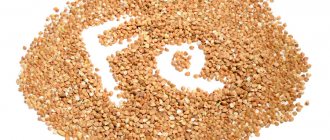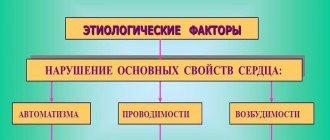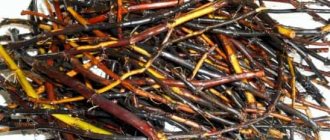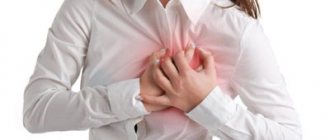We live very dynamically. Work, stress, lack of sleep, poor diet - all this ultimately affects your health. First of all, the heart and blood vessels suffer. Swelling, arrhythmia, changes in blood pressure and other unpleasant symptoms appear. Another reason for their occurrence is a deficiency of magnesium and potassium. What foods contain magnesium and potassium, and what you need to know about these elements, read the article.
Photo: pixabay.com
The importance of potassium and magnesium for the heart
Potassium, together with magnesium, is used to prevent arrhythmia, because Thanks to them, the correct passage of the cardiac impulse occurs. They apply:
- for the prevention of myocardial infarction;
- heart failure;
- improve myocardial contractions.
Potassium and magnesium are included in the complex of drugs in the treatment of angina pectoris because they make blood vessels more elastic. Potassium and magnesium are also used to prevent ischemic stroke. With their help, the blood thins and the risk of blood clots is reduced.
These macroelements supply the heart with energy and improve the metabolic processes of the heart muscle.
Potassium and magnesium deficiency
These 2 macroelements are substances that displace each other from cells. There is always a lot of magnesium in the human body. Potassium is supplied in smaller quantities and may not be enough.
So, when there is a lack of potassium, the cell with the missing element is occupied by magnesium and water. Due to this, cell outflow occurs.
If we talk about the heart muscle, then swelling in the cells can have disastrous consequences, causing myocardial infarction or ischemic stroke.
But not only the cells suffer, but also the channels through which nerve impulses pass. If the electrical pathway is swollen, arrhythmia may occur. To expel magnesium from the cell, potassium intake is necessary.
Magnesium is interchangeable with calcium. If a calcium ion occupies the cell instead of magnesium, the heart muscles will contract sharply, the person will feel pain, and the heart rhythm will be disrupted.
What foods generally contain magnesium?
Magnesium deserves the title of a “sports” element. It is responsible for the growth of muscle mass, supports the heart muscle, stimulates protein synthesis in the body, participates in metabolic processes, stimulates intestinal function, removes cholesterol and regulates the transmission of nerve impulses.
Products containing magnesium should be consumed daily. A person's need for magnesium is approximately 400-500 mg per day.
Magnesium is found in a wide variety of foods on our table:
- oil (sesame, flaxseed, peanut, ghee); — cheese (Dutch, Poshekhonsky, goat, blue cheese); - yogurt (1.5 - 3.2%); - cottage cheese (low-fat and low-fat, curd cheese); - condensed milk; - bitter chocolate; - meat (almost all types); — fish (halibut, sturgeon, haddock, perch, cod, saury); - duck eggs; - cereals (rolled oats, chickpeas, peas, buckwheat, brown rice, lentils); - fruits (cherry, kiwi, pineapple, feijoa, raspberry, pear, peach, persimmon); — many varieties of tea (for example: “Ivan-Chai”) and juices; - ginger, mustard, vanilla.
Drinking water is enriched with various minerals: the main percentage is sodium, a small percentage is calcium, potassium and magnesium.
Sea salt contains magnesium, the highest percentage of mineral in Dead Sea sea salt.
Daily intake of potassium and magnesium
There are certain norms for the consumption of these minerals by various categories of the population, which are determined by age, as well as gender.
- Children up to six months of age should receive magnesium (Mg) up to 30 milligrams per day, and potassium (K) up to 650 mg per day;
- Children under three years of age need up to 140 mg of magnesium and up to 650 mg of potassium;
- Children from four to nine years old up to 230 milligrams Mg and 1700 mg potassium;
- Children under 14 years of age up to 580 mg of magnesium and 1700 mg of potassium;
- Girls under 18 years of age need a daily intake of magnesium up to 690 mg, potassium up to 1700 mg;
- Boys under 18 years old: 740 mg Mg, up to 1700 mg potassium;
- Adult women up to 660 mg Mg and 2100 mg potassium;
- Men up to 760 mg Mg and 2100 mg potassium;
- Pregnant women belong to a separate category because... their body needs an increased amount of macroelements, magnesium, in this case it is consumed from 400 mg per day to 680 mg per day. The potassium norm doubles to 3400 milligrams per day.
Prevention
To avoid a deficiency of these macroelements in the body, you must first of all eat well. The potassium-magnesium diet involves eating large amounts of fresh vegetables and fruits, wheat bran, legumes, dried fruits, nuts and seeds. It is advisable to drink more cocoa, coffee and green tea.
https://youtu.be/1Ud7GEFNTKA
Considering the amount of magnesium in vegetables and fruits, you can prepare fresh salads daily with sufficient macronutrients and vitamins.
To prevent a deficiency of nutrients, you need to stop smoking and not abuse alcohol.
https://youtu.be/AVyvRUkocx4
Products containing potassium and magnesium
The table below presents a list of products containing these 2 microelements:
Having identified products containing potassium and magnesium separately, let’s analyze which products contain large amounts of potassium and magnesium for the heart.
- Wheat bran is one of the richest products in these substances, it contains 582 mg of Mg per 100 g, and 1158 mg of potassium.
- In second place are soybeans, containing 248 mg of magnesium and 1374 mg of potassium.
- In third place are beans, Mg in it is 119 mg, potassium 810 mg/100 grams.
It should be borne in mind that during heat treatment the amount of useful elements sharply decreases, so it is better to give preference to unprocessed products.
Potassium diet
This diet is useful not only for the functioning of the heart muscle and blood vessels.
Its effect is strengthening on joints and muscles, improves the functioning of internal organs and improves immunity.
For those who want to lose weight, a potassium diet will also help.
Important! This diet also has contraindications: excess salts in the body and endocrine diseases. Therefore, do not forget to consult your doctor before starting to use it.
For adults
With a potassium diet for adults, it is recommended to eat no more than 5 meals per day and limit water intake to 1.5 liters per day.
Breakfast
- wheat porridge with milk with the addition of raisins or dried apricots/buckwheat porridge with milk;
- 2 boiled eggs/vegetable salad;
- tea or coffee with milk.
Lunch
- dried fruits/nuts (no more than 50 g);
- fresh carrot (or cabbage) juice.
Dinner
- pureed pumpkin or potato soup;
- pilaf with raisins and stewed pork/potato cutlets with vegetable salad;
- fruit jelly.
Interesting article: Therapeutic diet for cardiac arrhythmia: healthy foods and contraindications by age
Snack
- baked apples/bananas;
- rosehip tea/compote.
Dinner
- boiled rabbit meat or fish with mashed potatoes;
- vegetable or fruit salad;
- tea with milk.
This menu is for 1 day only. If you want other dishes, you can prepare them using foods high in potassium and magnesium. Examples of such products can be found in the table above.
For children
For children, such a diet is prescribed only by a doctor if a heart murmur or other problems with the cardiovascular system are detected.
The menu offered below shows only part of the acceptable dishes on a potassium diet. You can prepare other foods, but the final version of the diet must be approved by the child’s attending physician.
Breakfast
- mashed potatoes/baked potatoes;
- cottage cheese with nuts;
- tea with milk.
Lunch
- buckwheat porridge/dried fruits (no more than 30 g);
- dried fruit compote/fresh carrots.
Dinner
- pureed vegetable soup;
- stewed chicken with mashed potatoes/rice porridge with pumpkin;
- fruits.
Snack
- dried apricots/baked apples;
- rosehip tea/compote.
Dinner
- boiled rabbit meat or fish/carrot cutlets;
- vegetable salad;
- rosehip compote.
For your child's diet, use only lean meat. Before going to bed, you can drink a glass of kefir or dried fruit compote.
Interesting article: Effective diet for hypertensive patients with heart and vascular diseases
The role of potassium in human life
The human body contains a lot of potassium. Its weight is about 250 grams. The daily intake of potassium is three to five grams.
A lack of the element means that glucose will not be absorbed and converted into energy, which can lead to poor muscle contraction and possible paralysis.
Together with magnesium, potassium is involved in processes related to the functioning of the heart. Potassium is necessary to normalize pressure in the arteries and normalize heart rhythm and muscle contraction.
Potassium helps get rid of excess fluid, eliminates toxins, and saturates the brain with oxygen.
Potassium is essential in the treatment of allergies. The main signs of potassium deficiency are:
- muscle cramps;
- disturbances in heart rhythm;
- growth slowdown;
- sexual disorders.
A lack of potassium can lead to multiple sclerosis, because... Sodium salts can accumulate in cells. Chronic fatigue is also one of the signs of deficiency of this macronutrient.
Daily norm
In order to maintain a healthy body, it is necessary to monitor the balance of important microelements. There are certain consumption standards that must be adhered to. For example, the amount of magnesium that comes with food or in tablets should be at least 350 mg. The recommended amount for an adult is about 500 mg. However, pregnant women are recommended to increase this figure to 1200 mg.
The calcium norm for adults and children is different, and for women during lactation and pregnancy it increases (from 1500 mg to 2000 mg). The table shows the daily norm of Ca taking into account age and gender.
| Age, years. | Norm Ca, mg Women. / Husband. |
| 1 – 6 | 1500 |
| 7 – 9 | 700 |
| 10 – 12 | 1200 / 900 |
| 13 – 20 | 1200 |
| 21 – 50 | 1000 |
| over 50 | 1200 – 1500 |
The potassium intake rate is calculated individually. In this case, not only age plays a role, but also weight, gender, and amount of load. The table shows indicators only for some cases. To avoid an excess of a microelement in the body or, conversely, a lack of it, it is better to consult a doctor to calculate the individual norm.
| Category | Norma K |
| From 18 years old | 2.5 g |
| Athletes and those who are exposed to severe physical activity on a daily basis | 5 g |
| Pregnant women | 3.5 g |
| From 12 to 18 years old | 20 mg per 1 kg of weight |
Important! Excess potassium can be fatal! The lethal dose is 14 g, and the toxic dose is 6 g of the microelement.
The role of magnesium in the body
It is difficult to overestimate the effect of magnesium on the human body.
Chronic fatigue, cramps, neuroses and many other symptoms can be caused by a deficiency of this substance.
The normal content of the substance in the human body is about 320 mg for women, and about 420 mg for men.
Magnesium activates enzymes that are involved in carbon metabolism.
A deficiency of the substance can be accompanied by a number of health problems, such as:
- increased blood pressure,
- atrial fibrillation,
- nervous breakdowns,
- cardiac ischemia.
This macronutrient protects the heart from heart attacks and relaxes the heart muscle.
Magnesium has a huge impact on a person’s psychological state. A lack of an element can lead to seizures, nervous breakdowns, and neuroses. With a lack of this macroelement, sleep deteriorates, and cramps often occur at night.
Magnesium content in food
The most magnesium is found in asparagus, soybeans, buckwheat, and brown rice. Hazelnuts also contain a lot of Mg. After processing (cleaning, grinding) cereals, the amount of substance in them is significantly reduced.
Food containing K and Mg
| Product | Magnesium content in mg per 100 g of product | Potassium content in mg per 100 g of product |
| Greens and vegetables | ||
| Parsley | 85 | 446 |
| Onion | 19 | 259 |
| Green onions | 20 | 176 |
| White cabbage | 16 | 184 |
| Carrot | 38 | 236 |
| cucumbers | 13 | 140 |
| Tomatoes | 8 | 292 |
| Potato | 13 | 553 |
| Leafy green salad | 41 | 218 |
| Beet | 21 | 286 |
| Pumpkin | 14 | 202 |
| Garlic | 29 | 262 |
| Corn | 43 | 286 |
| Dill | 70 | 385 |
| Eggs, meat, fish and seafood | ||
| Chicken eggs | 12 | 138 |
| Chicken | 20 | 167 |
| Pork | 27 | 324 |
| Rabbit | 20 | 167 |
| Pollock | 85 | 420 |
| capelin | 65 | 335 |
| Pink salmon | 57 | 320 |
| Flounder | 68 | 345 |
| Squid | 48 | 280 |
| Mussels | 75 | 310 |
| Beef | 21 | 336 |
| Dairy | ||
| Milk | 14 | 144 |
| Cheese | 49 | 116 |
| Cottage cheese | 22 | 114 |
| Kefir | 14 | 138 |
| Sour cream | 7 | 94 |
| Dry and fresh fruits | ||
| Bananas | 40 | 357 |
| Persimmon | 60 | 203 |
| Dried apricots | 47 | 1878 |
| Raisin | 42 | 859 |
| Orange | 15 | 198 |
| Grapefruit | 13 | 196 |
| Kiwi | 16 | 298 |
| Nuts | ||
| Cedar | 234 | 557 |
| Walnuts | 114 | 661 |
| Almond | 224 | 809 |
| Pistachios | 198 | 822 |
| Cereals and legumes | ||
| Rice | 153 | 99 |
| Buckwheat | 251 | 382 |
| Beans | 119 | 810 |
| Oat groats | 134 | 363 |
| Peas | 99 | 725 |
| Wheat groats | 121 | 208 |
| Semolina | 69 | 132 |
| Beverages | ||
| Tea | 420 | 2480 |
| Coffee | 200 | 1588 |
| Cocoa | 191 | 1689 |
Reviews with recommendations
Natalya: “The lack of any mineral in the body immediately affects the appearance and well-being, so you should eat a varied diet. This way, minerals and vitamins will be supplied to the body regularly and in the required quantities.”
Svetlana: “I believe that you should not self-medicate. If there are signs of a deficiency or excess of potassium or magnesium, you should immediately see a doctor. Only with the help of tests can a correct diagnosis be established.”
Ekaterina: “One day I decided that I didn’t have enough potassium. I began to lean heavily on products containing it. As a result, frequent urge to go to the toilet and discomfort in the limbs. Therefore, you shouldn’t decide on your own whether your body has enough minerals or not.”
A lack of magnesium and potassium in the human body can lead to disruption of the vital functions of the organs of the human body. Therefore, it is necessary to be attentive to your health, and at the slightest deviation, consult a doctor for correct diagnosis and treatment.
Jan 18, 2016Violetta Lekar
How to Cook Animal Products to Retain Potassium
To retain maximum nutrients in food, foods must be properly prepared:
- In order to retain more of the beneficial composition in meat or fish, you need to cook them over low heat.
- It is better not to fry meat and fish in a frying pan (during the frying process, harmful carcinogens accumulate in the product); healthy dishes are best cooked in the oven or on the grill. Pieces of meat or fish should be as large as possible.
- Frying raw foods should be done quickly; do not place meat or fish in a frying pan with unheated oil: the product will absorb excess fat.
- Cooled dishes should not be heated in a frying pan: with additional frying, the beneficial substances are destroyed, and harmful carcinogens will take their place.
- Fish is best steamed or baked in its own juices.
- An important rule for preparing seafood is that seafood should not be subjected to long-term heat treatment.
Eggs and dairy products
Amount of potassium contained in dairy products and eggs:
- dry cow's milk contains about 1.8 g of mineral substances per 100 g of product;
- low-fat cow's milk - approximately 150 mg;
- goat milk - 200 mg;
- sheep milk - 140 mg;
- low-fat yogurt - 255 mg;
- whole milk yogurt - 155 mg;
- 100 g of sour cream contains approximately 140 mg of potassium;
- in cream - 130 mg, and in low-fat cream there is more microelement than in high-fat cream;
- cottage cheese - 85 mg;
- 100 g of cream cheese contains approximately 250 mg of potassium;
- Brie - 150 mg;
- Gouda - 120 mg;
- Roquefort - 90 mg;
- Tilsit - 65 mg;
- hard goat cheese - 50 mg;
- 100 g of raw egg white contains 160 mg of potassium;
- raw yolk - 110 mg;
- fried eggs - 150 mg per 100 g of product;
- boiled eggs - 130 mg;
- raw quail eggs - 130 mg.
Seafood
Potassium in food products (found in considerable quantities in seafood) related to “seafood”:
- The leader in potassium content among seafood is Far Eastern salmon; 100 g of fish contains 490 mg of the mineral;
- sea bass and trout contain 480 mg;
- coho salmon - 450 mg;
- tuna - 440 mg;
- halibut and chum salmon - 430 mg;
- herring - 420 mg;
- cod - 410 mg;
- mackerel - 405 mg;
- pink salmon - 360 mg;
- octopus - 350 mg;
- crabs - 330 mg;
- mussels - 320 mg;
- smelt - 290 mg;
- eel - 270 mg;
- shrimp - 265 mg;
- squid - 245 mg;
- scallops - 200 mg;
- oysters - 170 mg;
- flounder - 160 mg per 100 g of fish.
Meat
In meat dishes, the amount of potassium depends on the method of preparing the product and the type of meat.
Microelement content in meat:
- 100 g of baked pork contains 540 mg of mineral;
- roast goose - 390 mg;
- fried beef - 375 mg;
- fried ham, stewed beef liver - 350 mg;
- stewed pork ribs, baked beef - 320 mg;
- fried turkey - 300 mg;
- boiled chicken liver - 260 mg;
- stewed pork tongue - 240 mg;
- boiled beef tongue - 185 mg;
- stewed chicken - 180 mg;
- stewed pork liver - 150 mg;
- lard - 65 mg per 100 g of product.
Potassium in drinks
The following drinks contain some potassium:
- tea;
- coffee;
- hot chocolate;
- live beer;
- milk;
- Orange juice;
- grape juice;
- tomato juice.
Potassium in sweeteners and chocolate
Potassium in foods is found in significant quantities in some sweets, such as:
- cocoa powder - 100 g contains 1.5 g of potassium;
- black molasses - 1.4 g per 100 g of product;
- carob powder - 830 mg;
- dark chocolate (over 70% cocoa) - 700 mg;
- dark chocolate (45%-69% cocoa) - 550 mg;
- milk chocolate - 380 mg;
- maple syrup - 210 mg;
- cane sugar - 135 mg;
- honey - 50 mg.
What are the dangers of excess potassium (hyperkalemia)?
Everything in the body must be balanced, so both a deficiency of a macronutrient and its excess are harmful, which is manifested by the following symptoms:
- excessive stimulation of the nervous system;
- disruptions in the functioning of the heart muscle;
- renal disorders;
- increased diuresis;
- discomfort in the muscles of the legs and arms.
Excessive potassium intake can cause the development of calcium deficiency, an essential micronutrient for bone health.
Only a doctor can establish hyperkalemia after laboratory blood tests. If you are diagnosed with this, you should immediately stop taking potassium supplements (if they were prescribed for medical reasons) and reduce the amount of food rich in this microelement in your diet.
Foods with the highest potassium content
The most potassium is found in greens. Make sure that your diet includes spinach, sorrel, dill, parsley, and lettuce. Potatoes, fish and dairy products are also rich in this trace element. Honey, bananas, and sunflower seeds will help restore potassium deficiency after a long workout and are good for the heart and stomach. Also, do not deny yourself citrus fruits, nuts, grapes and dried apricots (dried apricots).
When compiling your daily diet, keep in mind that you should get the predominant amount of potassium from animal products. A large amount of plant foods upsets the sodium balance in the body and promotes its excretion.
https://youtu.be/ifHYvORWS_k
Potassium deficiency symptoms and consequences
Hypokalemia can occur due to nutritional disorders, for example, as a result of a strict diet. Large amounts of potassium are lost through sweat and frequent urination. People who engage in sports, heavy physical labor, or take diuretic medications often suffer from a lack of potassium.
Frequent poisoning of the body with various toxins, leading to vomiting and diarrhea, can also lead to a lack of potassium in the body. Coffee, alcohol, and carbonated drinks wash out potassium.
Sweetie: the benefits and harms of emerald fruits for the human body
The main symptoms of insufficient potassium levels are:
- Increased fatigue
- Muscle weakness
- Nervous exhaustion
- Irritability
- Non-healing wounds and ulcers
- Brittle hair and nails
- Muscle pain
- Convulsions
- Dry skin
- Erosion of mucous membranes
- The occurrence of superficial hematomas
- Frequent unexplained constipation
If there is not enough potassium in large quantities, the result can be a disturbance in the functioning of the heart, often expressed in the form of arrhythmia.
If the symptoms of hypokalemia are pronounced, numerous and often become a cause for concern, then you need to consult a doctor to undergo the necessary examination and prescribe appropriate therapy.
You should not use potassium supplements on your own, as this can cause serious disruptions in the functioning of the body due to subsequent excess of the mineral.
Benefits of potassium for the body
Potassium is an essential macronutrient for the body. It is part of the cells and, together with sodium, is responsible for the water balance in the body. An important task of potassium is to maintain the pH balance of the internal environment of the body. If the body becomes acidic, potassium restores the acid-base balance.
For humans, this element performs the following important functions:
- participates in the passage of nerve impulses, which ensures normal muscle contraction;
- important for the heart and blood vessels - normalizes heart rhythm and blood pressure. In case of metabolic disorders, it improves myocardial function;
- improves oxygen supply to the brain. Prevents stroke and depression;
- normalizes the balance of fluids – tissue and extracellular;
- promotes the conversion of glucose into energy;
- activates enzymes;
- in contrast to sodium, it does not retain, but removes fluid from the body. Is a sodium antagonist;
- prevents sclerosis, does not allow sodium salts to accumulate in the vessels of the brain;
- participates in the removal of toxins from the body;
- regulates water-salt metabolism, prevents the formation of edema;
- important for the healthy functioning of soft tissues (in blood vessels, capillaries, muscles, liver, kidneys, endocrine glands);
- reduces allergy symptoms;
- improves performance, prevents chronic fatigue.
The ratio of sodium and potassium in the body should be 1:2. Excess sodium is harmful to health, and the problem is solved by introducing additional potassium.
How to Preserve Potassium in Plant Foods
Potassium content in plant foods can be easily maintained if the following rules are followed:
- Most vegetables are best eaten raw: heat treatment reduces the amount of substances the body needs.
- When cooking, it is recommended to cut vegetables into large pieces.
- Plant products should be washed very quickly before use.
- Proper cooking of vegetables: minimum amount of water and time.
- When cooking vegetables, water washes out and absorbs beneficial substances from plant products, so it is recommended to reuse vegetable broths.
- Baked or steamed vegetables retain more nutrients than boiled or fried vegetables.
To preserve potassium in food products, it is better to steam them.
- Vegetables and fruits dried in the sun are also useful (dried apricots and dried tomatoes contain much more potassium than fresh ones). Canned vegetables do not benefit the body.
Nuts and seeds
Potassium in foods (found in significant amounts in nuts and seeds):
- hemp seeds are the leader in mineral content: 100 g of peeled seeds contain more than 1 g of potassium;
- 100 g of pistachios contain 1 g of microelement;
- 100 g of flaxseeds and pumpkin seeds contain up to 800 mg of useful elements;
- hazelnuts contain about 700 mg;
- cashews and sunflower seeds - 650 mg;
- pine nuts - 600 mg;
- sesame seeds - 470 mg;
- walnuts - 440 mg;
- coconut - 350 mg.
Vegetables
Vegetables rich in potassium:
- dried tomatoes - 100 g of vegetables contain almost 3.5 g of mineral matter;
- baked potatoes in peel - 550 mg;
- Boiled potatoes without skin contain much less potassium than unpeeled potatoes: 330 mg;
- Jerusalem artichoke - 430 mg;
- garlic - 400 mg;
- Brussels sprouts - 390 mg;
- zucchini, kohlrabi cabbage, pumpkin contain a microelement in the amount of 350 mg per 100 g of product;
- beets and carrots about 325 mg;
- fresh tomatoes – about 235 mg;
- radishes and eggplants - 230 mg;
- bell pepper - 210 mg;
- turnip - about 190 mg per 100 g;
- cabbage - 170 mg;
- cucumbers and onions - 150 mg.
Fruits
Fruits that are high in potassium:
- avocado, 100 g contains about 500 mg of trace elements;
- bananas - 360 mg per 100 g of fruit pulp;
- kiwi, persimmon - 310 mg;
- melon, apricot - 260 mg;
- pomegranate, fig - about 235 mg;
- quince, nectarine - 200 mg;
- peach - 190 mg;
- orange - 180 mg;
- feijoa - 170 mg;
- mangoes and tangerines - 165 mg;
- plums - 160 mg;
- pears - 120 mg;
- apples - 110 mg.
Cereals and cereals
Potassium-rich cereals and cereals:
- 100 g of rice bran contains almost 1.5 g of potassium;
- wheat bran - a little more than 1 g of mineral substance;
- oat bran and rye - 500 mg;
- barley - 450 mg;
- wheat, oats - 430 mg;
- rye, oat, wheat flour - 370 mg;
- buckwheat - 320 mg;
- corn flour, barley flour - 310 mg;
- corn - 290 mg;
- brown unprocessed rice - 270 mg;
- semolina, millet - about 190 mg;
- white processed rice - about 90 mg;
- rice flour - 75 mg.
Dried fruits
In dried fruits and berries the concentration of nutrients is always higher than in fresh ones. This is explained by the fact that when dried, the weight of the fruit decreases due to the loss of water. The content of useful substances remains unchanged.
Potassium-rich dried fruits:
- dried apricots, apricots - 100 g contain 1.7 g of potassium;
- peaches - about 900 mg;
- raisins -750 mg;
- plums - 730 mg;
- dates - approximately 700 mg;
- figs - 680 mg;
- pears - 530 mg;
- apples - 450 mg.
Legumes
Most potassium is found in legumes, which lose almost half of this essential microelement during cooking. Therefore, the best option for preparing dishes from legume products is stewing.
Potassium content in legumes:
- 100 g soybeans contain 1.8 g of potassium;
- 100 g of white beans contain 1.7 g of mineral matter;
- 1.5 g - black beans;
- 1.4 g - pink beans;
- 1.3 g - red beans;
- 100 g of peas contains slightly less than 1 g of potassium;
- in 100 g of chickpeas and peanuts - 700 mg;
- in 100 g of lentils - 680 mg.
Greenery
Microelement content in greens per 100 g of product:
- watercress - 600 mg;
- spinach, parsley - 550 mg;
- cilantro - 520 mg;
- sorrel - 390 mg;
- arugula - 370 mg;
- green onions - 270 mg;
- celery - 260 mg;
- green salad - 200 mg;
- red salad - 190 mg.











